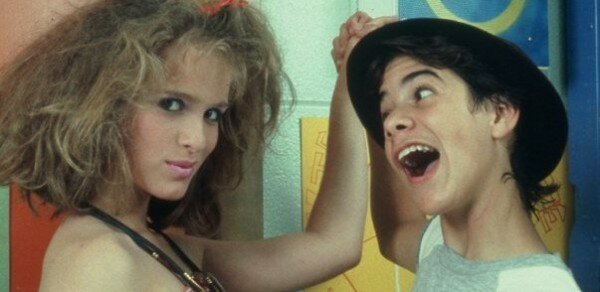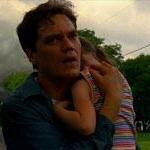Following the short series The Kids of Degrassi Street (1982), Degrassi Junior High (DJH) truly established the franchise centring on a bunch of young teens from Toronto that come together from all walks of life at their local school. But the difference between Degrassi and everything else is what hadn’t been explored before on television, perhaps anywhere in the world – the true issues facing teenagers. As testament, Australian public broadcaster ABC issued warnings of adult themes before screening each episode, and would continue to do so decades later on Degrassi: The Next Generation.
*This article contains spoilers – read with caution!*
Sex, drugs and family abuse are just some of the topics presented in the Canadian three-season show, and throughout each season, the ensemble cast get their time to individually shine and develop their characters. Season One is the first half of Years Seven and Eight, with a key focus on Steph (Nicole Stoffman), who decides to shed her ‘geeky’ image for a more ‘sophisticated’ look. Today it would be called something else as she tries to grow up much too quickly, but the emphasis on this pushes the idea of peer pressure that affects 99 per cent of teens during adolescence. While the reactions from her fellow students seem fairly tame and innocent, let’s not forget that the eighties were the raw beginning of open discussion about previously taboo social issues. Other notable episodes of Season One concern Rick (Craig Driscoll) abused by his father and Spike (Amanda Stepto) suspecting she’s pregnant after an eventful house party. It’s important to note here that these are 12-14 year olds, but DJH proved, and still does, that kids aren’t sheltered anymore.
Season Two continues as the second half of Years Seven and Eight, with Spike having had the baby and refusing father Shane (Billy Parrott) any involvement besides child support (the poor guy pays through money from an after-school job). Steph is still boy-crazy and tries to win the attention of Simon (Michael Carry). The same format continues as one character is the focus of any given episode, and the most interesting to develop are Lucy (Anais Granofsky), after appearances by substitute teacher Mr. Colby (Marcus Bruce), and Caitlin (Stacie Mistysyn) trying to hide her epilepsy for fear of being outcast. Caitlin is by far the most interesting character – although a Seven, she attracts the attention of many Eights and is presented as the most level-headed and the one with the best fashion sense. Yes, there were some good styles in the eighties.
Season Three marks a new year, but the Eights (now Nines) remain at DJH because the school’s added a Ninth grade. Their disdain is clear for some time as they visit the ‘proper’ local high school for certain classes. There, Lucy meets Paul (Michael Blake) and falls privy to nasty rumours. New characters emerge again as old ones fade (notably Steph, whose parents decide a private education was what she needed) and there are still fresh issues to be explored. The ‘three stooges’ of Joey, Wheels and Snake, while prevalent throughout the whole series and providing much of the comic relief with their rock star ambitions, really claim the spotlight in a more dramatic round. Joey (Pat Mastroianni) finds a benefit of repeating Eighth grade, while Snake (Stefan Brogren) faces an unnerving truth from his idol and Wheels (Neil Hope) finds death hard to face.
Each season ends with an important twist, and even now they wouldn’t be deemed too predictable. Different directors were enlisted throughout the series, but Kit Hood predominantly ran her creation – and to powerful effect. It’s enormously dated with the clothes and hairstyles but it’s so cool in its retroness and its topics are so varied that it’s a very easy watch. Not as much when you realise the topics are so easily relatable though; it’s amazing just how much the storylines of these teens ring true (albeit slightly modified) with today’s counterparts. Degrassi: The Next Generation is living proof of that. It might be easy to laugh at the sometimes forced speech, but the cast is solid. Whether they irritate you or surprise you, there’s always someone with a problem. And while that may not seem realistic to some, there’s always something lurking in everyone’s shadow. Degrassi Junior High just had the balls to finally show it.
*Contains spoilers – read with caution!*
Following the short series The Kids of Degrassi Street (1982), Degrassi Junior High (DJH) truly established the franchise centring on a bunch of young teens from Toronto that come together from all walks of life at their local school. But the difference between Degrassi and everything else is what hadn’t been explored before on television, perhaps anywhere in the world – the true issues facing teenagers. As testament, Australian public broadcaster ABC issued warnings of adult themes before screening each episode, and would continue to do so decades later on Degrassi: The Next Generation.
Sex, drugs and family abuse are just some of the topics presented in the Canadian three-season show, and throughout each season, the ensemble cast get their time to individually shine and develop their characters. Season One is the first half of Years Seven and Eight, with a key focus on Steph (Nicole Stoffman), who decides to shed her ‘geeky’ image for a more ‘sophisticated’ look. Today it would be called something else as she tries to grow up much too quickly, but the emphasis on this pushes the idea of peer pressure that affects 99 per cent of teens during adolescence. While the reactions from her fellow students seem fairly tame and innocent, let’s not forget that the eighties were the raw beginning of open discussion about previously taboo social issues. Other notable episodes of Season One concern Rick (Craig Driscoll) abused by his father and Spike (Amanda Stepto) suspecting she’s pregnant after an eventful house party. It’s important to note here that these are 12-14 year olds, but DJH proved, and still does, that kids aren’t sheltered anymore.
Season Two continues as the second half of Years Seven and Eight, with Spike having had the baby and refusing father Shane (Billy Parrott) any involvement besides child support (the poor guy pays through money from an after-school job). Steph is still boy-crazy and tries to win the attention of Simon (Michael Carry). The same format continues as one character is the focus of any given episode, and the most interesting to develop are Lucy (Anais Granofsky), after appearances by substitute teacher Mr. Colby (Marcus Bruce), and Caitlin (Stacie Mistysyn) trying to hide her epilepsy for fear of being outcast. Caitlin is by far the most interesting character – although a Seven, she attracts the attention of many Eights and is presented as the most level-headed and the one with the best fashion sense. Yes, there were some good styles in the eighties.
Season Three marks a new year, but the Eights (now Nines) remain at DJH because the school’s added a Ninth grade. Their disdain is clear for some time as they visit the ‘proper’ local high school for certain classes. There, Lucy meets Paul (Michael Blake) and falls privy to nasty rumours. New characters emerge again as old ones fade (notably Steph, whose parents decide a private education was what she needed) and there are still fresh issues to be explored. The ‘three stooges’ of Joey, Wheels and Snake, while prevalent throughout the whole series and providing much of the comic relief with their rock star ambitions, really claim the spotlight in a more dramatic round. Joey (Pat Mastroianni) finds a benefit of repeating Eighth grade, while Snake (Stefan Brogren) faces an unnerving truth from his idol and Wheels (Neil Hope) finds death hard to face.
Each season ends with an important twist, and even now they wouldn’t be deemed too predictable. Different directors were enlisted throughout the series, but Kit Hood predominantly ran her creation – and to powerful effect. It’s enormously dated with the clothes and hairstyles but it’s so cool in its retroness and its topics are so varied that it’s a very easy watch. Not as much when you realise the topics are so easily relatable though; it’s amazing just how much the storylines of these teens ring true (albeit slightly modified) with today’s counterparts. Degrassi: The Next Generation is living proof of that. It might be easy to laugh at the sometimes forced speech, but the cast is solid. Whether they irritate you or surprise you, there’s always someone with a problem. And while that may not seem realistic to some, there’s always something lurking in everyone’s shadow. Degrassi Junior High just had the balls to finally show it.
 Follow the author Katina Vangopoulos on Twitter.
Follow the author Katina Vangopoulos on Twitter.













